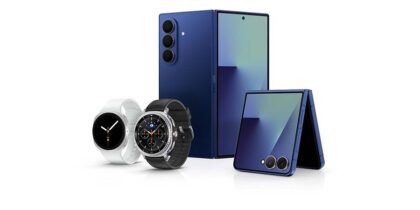To today’s smartphone-toting, connectivity-enabled generation, mobility is a fact of life. These Next Generation Achievers come into the workforce expecting to engage the business world with the apps and smart devices they grew up with. They intuitively know what’s possible with mobile technology, and how it will drive the Next Mobile Economy.
These workers are used to staying connected and productive, wherever, whenever, as long as they feel empowered. More than 80 percent believe they don’t need an office to be productive. But the reality of most workplaces often does not match their expectations.
Driven by the Demands of Workers
Today’s businesses need to pay more attention to the expectations of young, mobile workers, who expect to be equipped with open, mobile tools that facilitate collaboration to be their most productive and efficient.
Instead they are often provided legacy systems that impede openness and agility. Only 40 percent of millennial employees think they are provided with the right technology at work. Faced with situations like this, workers often find their own workarounds to make collaboration easier.
Ultimately, many high-performing employees who aren’t provided the right tools choose to move on to other companies. 51 percent of survey respondents say outdated technology makes it hard for them to retain top talent. Very often, these are the self-motivated high performers who employers cannot afford to lose, least of all to their competitors.
The Technology Gap: Employee Expectations vs Employer Priorities
In fairness to modern employers, they often do recognize the needs and issues of the millennial worker. And while many do understand that businesses need to move forward, they have legitimate concerns and reasons for not embracing the openness and collaboration of the mobile age. High on that list of concerns is data security.
Data is the currency of the digital era, and there’s more of it every year. Gartner estimates that 25 percent of corporate data will flow from mobile devices to the Cloud, bypassing enterprise security. With more and more data flowing around, data breaches become increasingly likely. Research predicts that the cost of data breaches will reach $2.1 trillion by 2019. To senior management, this represents a critical risk, one they would like to curb even at the expense of mobility and openness.
The workarounds that Next Generation Achievers adopt to collaborate better and more efficiently can introduce their own problems, and 70 percent of millennials admit to breaching IT policies. Employee devices rarely come with the level of security that business use demands, and their sheer variety makes them almost impossible for IT departments to manage.
Data Security in a Mobile World: Enabling Safe Mobility, Configurability and Collaboration
How do you enable your workforce with mobility while maintaining an acceptable level of security? Is it possible to have both, or are they irreconcilable opposites? Perhaps they were in the past, but today’s technology can offer both without compromise. Samsung Knox’s defense-grade technology, for example, is baked in from the chip up. Today’s mobile security has to be built into hardware and software, and go deeper than just surface-level features.
Enterprise Mobility Management (EMM)
Enabling workers with mobile tools need not come at the expense of corporate oversight. Cloud-based EMM systems let you maintain a degree of control over the business use of devices. Administrators can restrict the apps that can be used with corporate data, or track the device location. Knox Manage, for example, has 280 policies including whitelisting and blacklisting apps and websites, to prevent unintended data leaks.
Data Containerization
Keeping sensitive corporate data on as few devices as possible is generally a good idea, lessening possible breach points. Privacy issues that arise from keeping both corporate and personal data on the same device are alleviated with containerization (a key component of Samsung Knox), which segregates these two classes of data. What’s personal is kept personal, and company data is safe, satisfying both employer and employee.
Biometric ID
Today’s security goes much further than just password-protection. Facial recognition, fingerprint and iris ID, for example, offer additional layers of safety, making it more difficult for sensitive data to fall into the wrong hands.
Enable Your Workforce and Thrive in the Next Mobile Economy
Even if your organization has enjoyed success thus far, digital mobility has already created a shift across multiple industries around the globe – including yours. It is only a matter of time before your competitors leverage this, and leave you behind. Ensuring continued success in the Next Mobile Economy will require you to understand the workers who are most comfortable with its technologies — the Next Generation Achievers. Give them the tools that will empower them, and you will have a generation of born disruptors on your team, helping power your business forward.
Get a head start on understanding the requirements of the next generation workforce better, and learn how you can bridge the technology gap at the Born Disruptive: Powering the Workforce of the Next Mobile Economy webinar.






